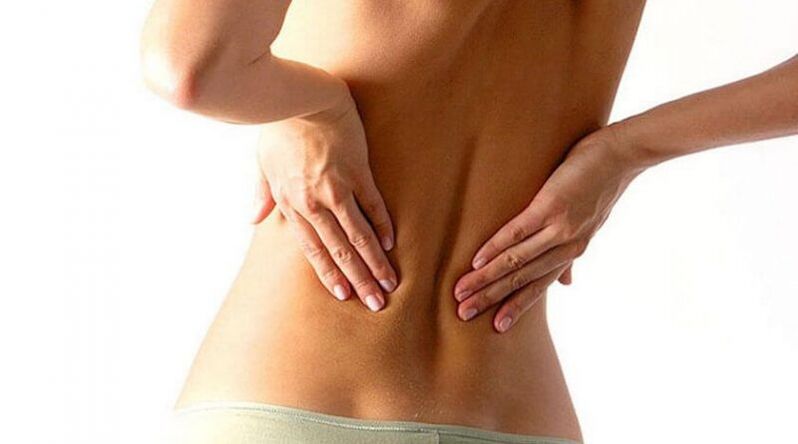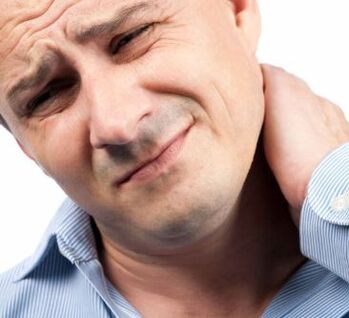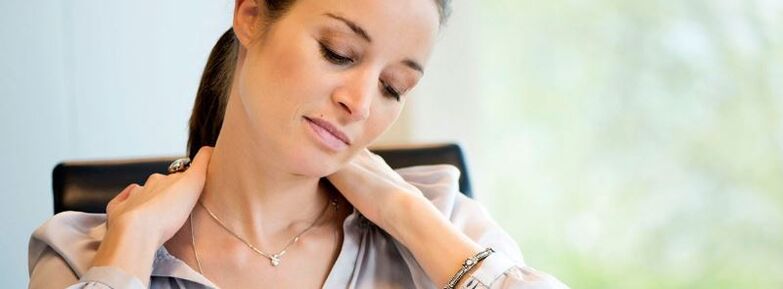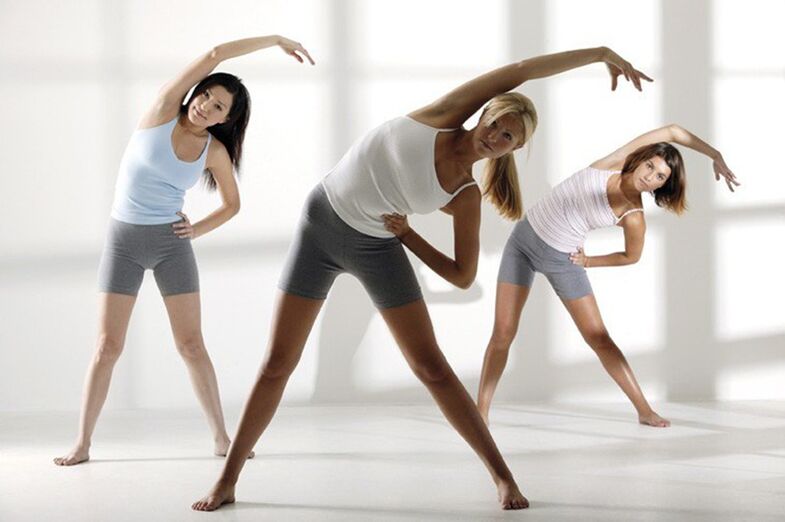
Spondylosis is a disease that affects the cartilage structure that makes up the intervertebral discs in the human body. These discs ensure mobility of the spine, giving us the opportunity to move and be flexible.
Osteonecrosis breaks down the structure of those discs, their structure changes. Because this process of destroying the discs is irreversible, the disease cannot be cured. But with proper treatment, you can stop the progression of the disease, slow it down and have time to maintain spinal mobility.
If the disease is not stopped in time, then after the destruction of the intervertebral discs, the process of destruction of the vertebrae will begin.
Important!Ignoring osteonecrosis will inevitably lead to complications, forcing a reduction in physical activity, impaired quality of life and sometimes even disability.
Among the complications of osteoarthritis, one of the most common is bone spurs. This is the name of the bone growth that appears along the edges of the vertebrae. The appearance of such growths can be caused by prolonged stress on the spine or unstable spinal motion segments.
Causes and symptoms of osteoarthritis
Experts believe that improper distribution of loads on the spine is the main cause of the development of osteonecrosis.
However, this process can also be triggered by hypothermia in a specific part or the entire body, too much physical stress on the back in general and the spine in particular, as well as injuries to the spinespine (impact on the spine, sharp turns, jolts and any physical impact that can cause vertebrae displacement).

There are a large number of minor causes of osteoarthritis. Usually, a person who has received such a diagnosis can identify 7-10 reasons from this list that caused the development of the disease in his particular case.
Therefore, below are listed the small but important causes of disc destruction. Here's what you should avoid so you don't find out what osteonecrosis is:
- stooping and poor posture (they cause curvature of the spine)
- weak back muscles (because of this, the entire load is on the spine)
- constantly being in an uncomfortable position
- Excessive physical activity related to lifting and carrying heavy objects, strength sports
- spinal cord injury
- Undernutrition or overnutrition, causing metabolic disorders
- overweight
- sit continuously
- emphasize
- Hormonal disorder
- bad genetics
- aging
As you can see, there are quite a few reasons. Symptoms of this disease are also very diverse. Osteoarthritis manifests itself differently in different people, but the following symptoms are commonly observed during osteoarthritis:
- severe back pain
- numbness in the arms or legs (sometimes both at the same time)
- headaches turn into migraines
- pain and aching in the neck and limbs
- dizziness, color spots in front of the eyes, sometimes loss of consciousness
- cold hands and feet
- Characteristic pain in the chest (such as intercostal neuralgia) and the heart area
- painful movements
The appearance of osteoarthritis
What's interesting: some doctors believe that osteoarthritis is not a pathology but a natural change in the human body.

One way or another, it is difficult to find a long-liver who has never had back pain in his life. According to various sources, osteonecrosis affects from 40 to 80% of all people on earth.
Typically, a person notices the first signs of osteonecrosis between the ages of 35 and 50. This has a lot to do with his lifestyle.
And if in some people, due to poor heredity, the first symptoms appear in adolescence, then for the majority, symptoms that appear after the age of 50 are considered normal.
This is because at the age of 45, the human body stops accumulating water in the intervertebral discs and the level of collagen necessary for joint health begins to decline inevitably.
In some people, the disc may even be forced out. This causes pain and is called sciatica.
Stages of osteoarthritis
There are 4 main stages of development of osteoarthritis.
- It all starts with the fact that the nucleus pulposus becomes dehydrated. The annulus fibrosus becomes covered with cracks due to the reduced height of the intervertebral disc. At this stage, the disease is very difficult to recognize because all changes occur in the intervertebral disc. No back pain or neck pain yet.
- As the height of the disc decreases, sagging of the muscles and ligaments occurs. This is due to the convergence of the attachment points of muscles and ligaments. Initially, they are attached to two adjacent vertebrae, but if the distance between these vertebrae is reduced, this cannot affect the muscle tissue.
- The third stage is characterized by the fact that changes become pronounced. Prolapse occurs, as does disc protrusion. Protrusion precedes the appearance of disc herniation. As a rule, at this stage the development of the disease can stop, because the annulus fibrosus remains intact and can still try to recover. But because the protrusion does not cause pain, very few people see a doctor at this stage.
- At the final stage, the fiber ring breaks. To counteract the excessive movement of the vertebrae at the site of the destroyed disc, the body moves and bone spurs appear on the vertebrae.
Diagnose
Before starting treatment for osteoarthritis, it is necessary to conduct a diagnosis and determine at what stage the disease is developing.
Important!Diagnosing osteonecrosis is impossible without first gathering a medical history.
If you notice any symptoms of osteonecrosis, listen to your body carefully.

The more you talk to your doctor about your feelings, the faster and more accurately he or she can diagnose and begin proper treatment. Don't think there will be too much information: ask relatives if they have symptoms of this disease. Family history will help more accurately determine the cause of osteonecrosis.
After the doctor has taken your medical history and concluded from your complaints that it is most likely osteoarthritis, he will recommend that you undergo an X-ray examination.
If for some reason this type of test isn't right for you, your doctor may also recommend an MRI or CT scan. However, these examinations are not required under the mandatory health insurance program, so you will have to pay for them yourself. Consider their high cost.
As a last resort, myelography is used to diagnose osteonecrosis. This is a painful and dangerous procedure where the doctor injects dye directly into the spinal canal.
How to treat osteoarthritis?
Currently, treatment of osteoarthritis is performed in many clinics. Some procedures bring positive effects, while others only provide pain relief. If you decide to choose one of the treatment options, before starting treatment for osteoarthritis, discuss it with your doctor.
The most popular procedures today are:
- magnetic stabbing effect
- pharmacological effects
- Acupressure with needles
- vacuum effect
- Electrical stimulation
- manual therapy
Many of these procedures are not treatments for osteoarthritis but are treatments for some of the symptoms of osteoarthritis. That's why the doctor must coordinate the procedures. This is especially true for patients diagnosed with cervical spondylosis.
The fact is that osteonecrosis that develops in the cervical spine is characterized by symptoms such as numbness of the arms and legs. And this is not a coincidence. In fact, there are many nerve endings in the neck area. And incorrectly selected treatment in this case can turn your cervical spondylosis into a comprehensive disability.
Surgical treatment
Spinal surgery is such a serious undertaking that it is prescribed with extreme caution and only if osteoarthritis is complicated by disc herniation. Such operations are not urgent, they are always carried out only according to plan. Before surgery, you will have to undergo many examinations and take many tests.
Such operations are prescribed only if the doctor has no other way to treat and realizes that without surgery, the patient's quality of life will significantly deteriorate. Before surgery, doctors will try to provide pain relief and supportive care.
Medicine
Medications to treat this condition are primarily designed to relieve pain and increase the amount of collagen in the body.

However, the thing to remember is that collagen and other nutrients for cartilage are absorbed not only by the spine but also by the entire body. Therefore, the effectiveness of these drugs is not very high.
The ointments that doctors recommend to treat osteoarthritis are also mainly intended to relieve pain when the attack is severe.
Unfortunately, if you have osteoarthritis, you will likely need maintenance treatment for the rest of your life. That means sometimes your back will hurt, you won't be able to put too much effort on yourself, especially you will have to avoid lifting heavy objects, causing stress on your back and spine.
Aggravates osteoarthritis
Exacerbations of this disease can occur due to excessive exertion of the back muscles. Additionally, osteonecrosis can be worsened by colds or infections, by hypothermia, stress, pregnancy, and hormonal changes. Weight gain will also cause back pain.
Prevent
As a preventative measure, doctors offer many patients physical exercises designed specifically for people with this disease.

If your doctor has prescribed you a course of exercise, you need to check with your doctor exactly what exercises are allowed for you. Exercises will help you maintain the firmness of the corset and this will reduce the load on the spine. In addition, these exercises will greatly help people who lead a sedentary lifestyle.
In addition, for preventive purposes, you may be prescribed massage. Depending on which part of the spine you have osteoarthritis, the massage therapist will work on this area. This not only helps relieve pain but also relaxes muscles. Combined with therapeutic exercise, massage brings good results.
Try to avoid stress on the spine, do not lift heavy objects. If possible, dress warmly, because. . . Any hypothermia can cause exacerbation of osteonecrosis.
Living a full life with this disease is possible, don't forget to take care of your body and take care of yourself.

























